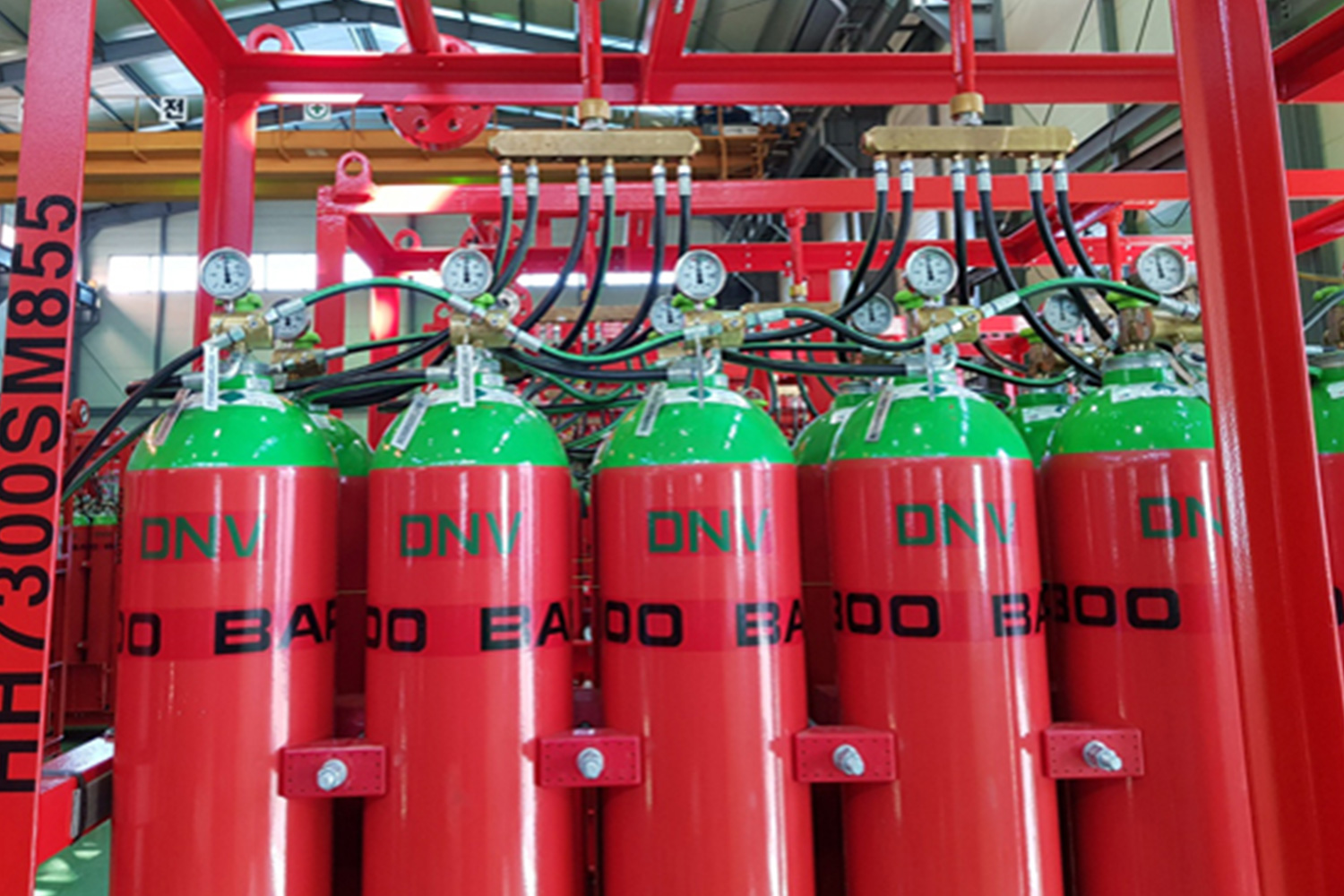Gaseous Fire Suppresssion System
Gaseous fire suppression, also called clean agent fire suppression,
is a term to describe the use of inert gases and chemical agents to extinguish a fire. There are three common clean agent fire suppression systems to choose from,
including FM-200, Novec™ 1230, and Inergen Clean Agent System. All systems use gases that are safe for the environment and humans, but they utilize different ways of suppressing a fire. The FM-200 system is stored as a liquid and vaporizes when discharged. The system displaces the oxygen around a fire, but heat absorption is its primary extinguishing capability. The Inergen system uses inert gases- nitrogen, argon, and carbon dioxide-
to reduce the oxygen level and suppress the fire. While carbon dioxide is included, the concentration is safe for humans and the environment.
Once the Inergen concentration is discharged, it returns to the atmosphere in its natural state. The Novec™ 1230 system uses a liquid that is vaporized when discharged, similar to the FM-200 system. However, unlike the FM-200 which suppresses the fire by heat absorption or cooling,
the Novec™ 1230 displaces the oxygen around a fire to suppress it.
is a term to describe the use of inert gases and chemical agents to extinguish a fire. There are three common clean agent fire suppression systems to choose from,
including FM-200, Novec™ 1230, and Inergen Clean Agent System. All systems use gases that are safe for the environment and humans, but they utilize different ways of suppressing a fire. The FM-200 system is stored as a liquid and vaporizes when discharged. The system displaces the oxygen around a fire, but heat absorption is its primary extinguishing capability. The Inergen system uses inert gases- nitrogen, argon, and carbon dioxide-
to reduce the oxygen level and suppress the fire. While carbon dioxide is included, the concentration is safe for humans and the environment.
Once the Inergen concentration is discharged, it returns to the atmosphere in its natural state. The Novec™ 1230 system uses a liquid that is vaporized when discharged, similar to the FM-200 system. However, unlike the FM-200 which suppresses the fire by heat absorption or cooling,
the Novec™ 1230 displaces the oxygen around a fire to suppress it.




